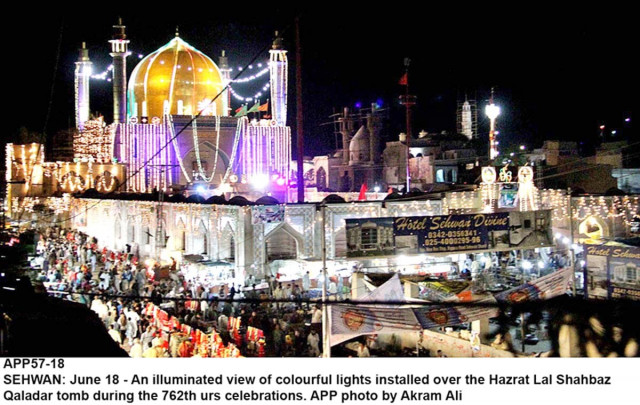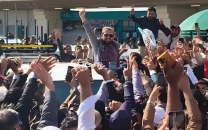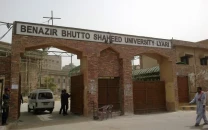Tragedy in Sehwan
Local administration should have planned ahead in terms of making essentials available for devotees attending the urs.

Mass political rallies tend to be centrally organised and usually make, at least, basic provision for emergency medical care and water, but mass gatherings at religious sites have nothing beyond the zeal of the individual pilgrims to sustain them. PHOTO: APP
The majority of those that have died were staying in tented encampments with little or no access to sufficient freshwater or sanitation, and given the vast numbers of people attracted to the site at the height of summer, deaths were virtually inevitable — but not in these numbers. Investigations by a private TV channel reveal that no arrangements were made for the provision of water. To be fair to the local administration, the numbers of people in attendance would stretch any administration to breaking point. Those arriving do so independently, primarily from across Sindh and Punjab, and there is no central organisation that has any overall responsibility for the event, which to all intents and purposes is completely unregulated. That said, the event was known of well in advance and the local administration should have planned ahead in terms of making the essentials available — with water being the primary provision. The medical superintendent of the Sehwan taluka hospital said that all bar one of the deaths were caused by heatstroke, a symptom of which is dehydration. Mass political rallies tend to be centrally organised and usually make, at least, basic provision for emergency medical care and water, but mass gatherings at religious sites have nothing beyond the zeal of the individual pilgrims to sustain them. At the very least get water to these people — and fast.
Published in The Express Tribune, June 20th, 2014.
Like Opinion & Editorial on Facebook, follow @ETOpEd on Twitter to receive all updates on all our daily pieces.



















COMMENTS
Comments are moderated and generally will be posted if they are on-topic and not abusive.
For more information, please see our Comments FAQ